|
| |
Care and Maintenance
To keep your
board looking good, care for it the same way you would for your car
(or -
with some of us -
maybe, better not? :)
Wash it in fresh water now and then with a mild
detergent, to remove accumulated pollutants. |
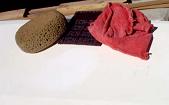 |
If yours is a satin-finished
go-fast bottom, rub the yellow gunk off with a "purple pad" (a
purple-colored Scotch-brand scrubbing pad). This will
restore the color, as well as make the water sheet off cleanly and speed you
up. For a similar effect with more work, wet-sand with 600 grit wet-and-dry
paper. Keep it flooded, lest you scratch your bottom! |
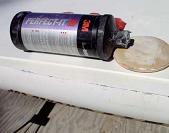 |
For all glossy painted areas,
an automotive rubbing compound will do wonders. My favorite is "3M
Finesse-It III extra-cut". In a pinch, toothpaste works fine.
If you get some on your non-skid, you can just rinse it
off. |
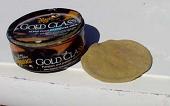 |
If you subsequently wax such
shiny painted areas, the wax will seal and protect the paint, sloughing off
pollutants for a while. Just don't wax the bottom, since the water would
bead and slow you down. Maguires "Gold Class"
makes you look good! |
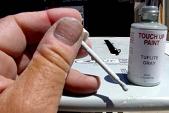 |
For little paint chips, get
some touch-up paint from your dealer, or from an automotive paint store.
Dabbing it onto the chipped spot will not only make it look better, but also
glue down the paint's edges, to keep it from peeling |
 |
If you got muck stuck onto
your non-skid, normal scrubbing does not take it off, and you do not want to
harm the non-skid, try a soft eraser! |
 |
For tar on non-skid, I
remove as much as I can with the eraser, then scrub with detergent, then dab
at the remnants with "Goo-Gone", a citric acid-based product available from
most department stores. Rinse thoroughly afterwards, lest the chemicals eat
into your paint. |
| Now that it is
clean and shiny, protect it in a bag, BUT make
sure you never put it away wet and zip up the bag!! The moisture contained
in padz and straps, as well as attached to the board itself, will create
water vapor in the bag when exposed to higher temperatures (substantial in a
closed, dark car!). This water vapor can penetrate into paints, causing
blisters.
How bad can it be? a sailboard with padz and straps
typically holds about half a pound of water, or about one cup. That will make a lot
of vapor when it heats up in the greenhouse that is your closed bag.
Always leave the bag open, until the board is totally
dry!
And for you windsurfers who listen to my preaching
about opening the vent plug when not on the water: if you open the plug,
then stick the wet board into a bag and zip it shut, the moisture from padz
and straps will find its way into the EPS foam core. Don't go there! |
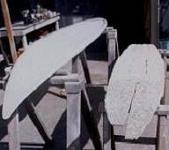 |
And speaking of vent plugs:
opening yours whenever you are off the water is the single most effective
thing you can do to prolong the life of your board. Leaving it closed will
cause the EPS foam core to expand and contract at least once a day. You take any
substance, no matter how stout, and you push and pull it continually, at
least 365 times a year, and it will fail. Guaranteed!
It's not that much, you say? I just measured my Trusty
Old 9'-4": typical summer day, near sea level, early morning, cool 60
degrees, it was 4 15/16" thick. Then the day warmed to 89 degrees, a thermal
low developed, and the board expanded to 5 3/16". That is a whopping 1/4"
change, or 5%!!
Get into a routine, where you tighten the vent screw
just before you put on your harness, or some such thing, and it will become
second nature, and you will not forget. But DO IT! |
| For long-term
storage, keep it in a nice, comfortable place. If you live in a cold climate
and have to heat in the winter, keep in mind that the rafters where you
store your board may be substantially warmer than the rest of the space. And
do not let your board touch the furnace!! (you think I am dreaming up gory
scenarios? think again!). Make sure you don't store anything really heavy on
your board, especially not anything heavy with sharp edges. Given enough
time, your board will acquire dents that way. especially when it is up in
the rafters. where it is warm... |
|
Return to
Miscellany |
|